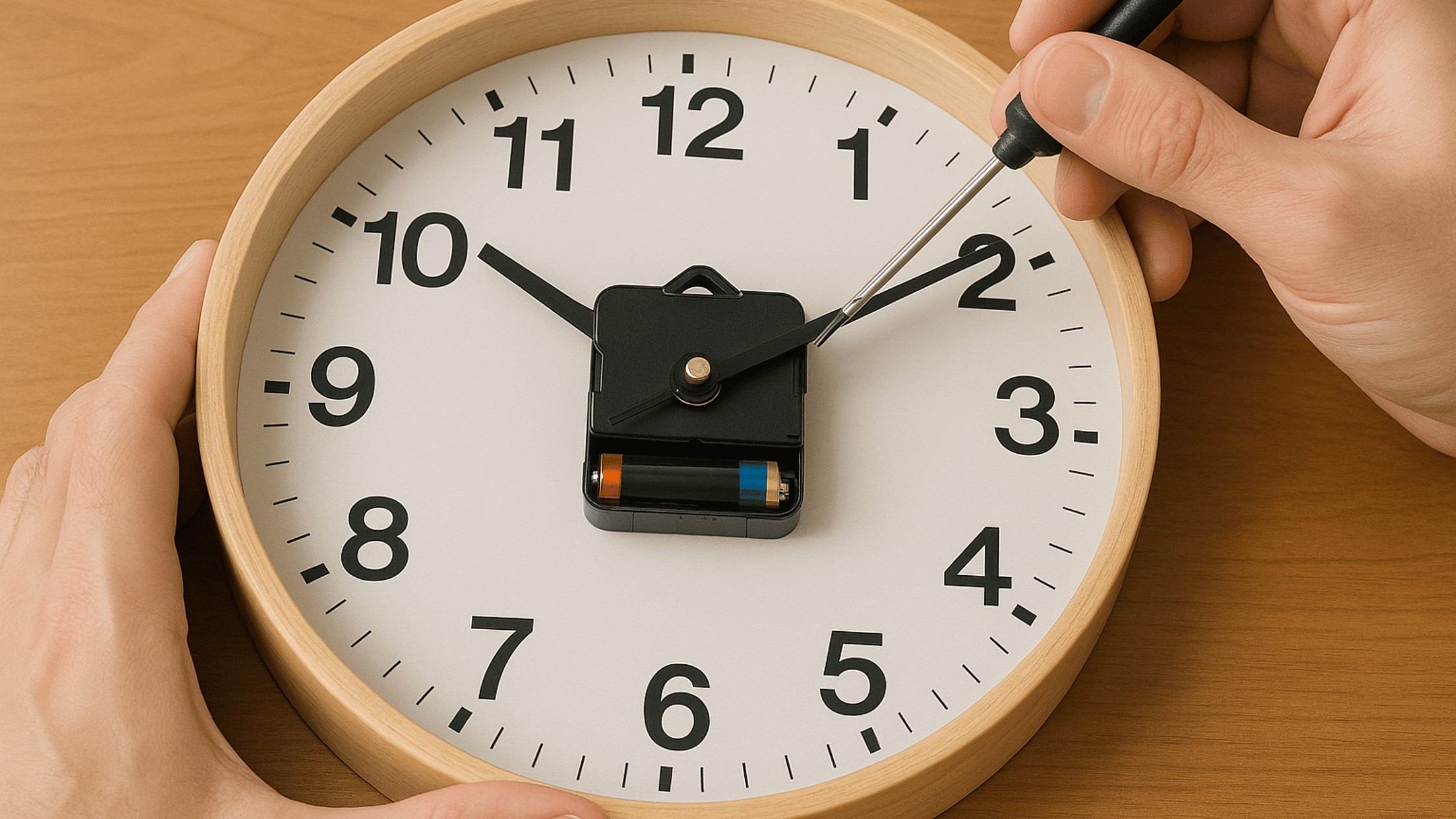How to Repair a Wall Clock: A Step-by-Step Guide
Wall clocks are timeless pieces that add functionality and charm to any space. However, like any device, they can stop working or encounter issues over time. Whether your clock has stopped ticking, is running slow, or has loose hands, this guide will help you repair your wall clock and get it back in working condition.
Common Issues with Wall Clocks
Before diving into repairs, it’s important to identify the problem. Here are some common issues:
-
Clock has stopped working completely
-
Often caused by dead batteries or mechanical failure.
-
-
Clock runs too fast or too slow
-
This may indicate a problem with the movement mechanism or pendulum.
-
-
Loose or stuck hands
-
Misaligned or damaged clock hands can prevent the clock from functioning properly.
-
-
Unusual ticking or noise
-
This can indicate wear and tear in the clock’s internal components.
-
-
Clock does not keep accurate time
-
Could be due to worn-out gears or an unbalanced pendulum.
-
Tools You’ll Need
Before starting the repair process, gather these tools:
-
Screwdriver set (flathead and Phillips)
-
Small pliers
-
Replacement clock movement (if needed)
-
Cleaning cloth
-
Rubbing alcohol or mild cleaning solution
-
Batteries (new and functional)
-
Tweezers (optional for fine adjustments)
Step-by-Step Instructions to Repair Your Wall Clock
1. Inspect the Clock
-
Remove the clock from the wall and place it on a flat, clean surface.
-
Check for visible damage such as bent hands, loose parts, or cracks in the glass cover.
-
Ensure that the clock is clean and free of dust or debris.
2. Replace the Batteries
-
Open the battery compartment.
-
Remove the old batteries and check for signs of corrosion or leakage.
-
Clean the battery contacts with a cloth and rubbing alcohol if needed.
-
Insert new batteries and test if the clock starts ticking again.
3. Adjust the Hands
-
If the hands are stuck or overlapping:
-
Gently pull the hands away from the dial.
-
Align the hour and minute hands so they do not touch each other.
-
Tighten the nut at the center to secure the hands.
-
-
Check for smooth movement by manually moving the hands to different positions.
4. Clean the Clock Mechanism
-
Remove the back panel of the clock to access the movement.
-
Use a dry cloth to clean dust from the gears and moving parts.
-
If there is grime, use a mild cleaning solution and a cloth to wipe it away. Avoid soaking any parts.
5. Replace the Clock Movement (if necessary)
-
If the clock still doesn’t work after battery replacement and cleaning, the movement mechanism might need replacing.
-
Purchase a compatible movement kit from a hardware store or online.
-
Follow the manufacturer’s instructions to remove the old mechanism and install the new one.
-
6. Check for Noise or Misalignment
-
If the clock is making unusual noises:
-
Tighten all screws and fasteners.
-
Ensure the hands are not rubbing against the glass or each other.
-
-
For pendulum clocks, adjust the pendulum to ensure it swings evenly.
7. Reassemble and Test
-
Reattach the back panel and any removed parts.
-
Hang the clock back on the wall and check its functionality.
-
Observe for a day or two to ensure it keeps accurate time.
Tips for Maintaining Your Wall Clock
-
Regular Cleaning: Dust the clock face and mechanism periodically to prevent buildup.
-
Battery Maintenance: Replace batteries every 6-12 months, even if they still appear functional.
-
Avoid Overwinding: For mechanical clocks, do not overwind the mechanism.
-
Check the Mounting: Ensure the clock is securely mounted to avoid vibrations that could affect accuracy.
When to Seek Professional Help
If your clock is an antique or has sentimental value, it’s best to consult a professional clock repair specialist. They can handle delicate mechanisms and ensure proper restoration without causing damage.
Conclusion
Repairing a wall clock can be a simple and rewarding task with the right tools and guidance. By following this step-by-step guide, you can address most common issues and extend the life of your clock. Whether it’s a family heirloom or a modern piece, your wall clock will continue to serve as both a functional tool and a decorative element in your home.
For more tips on maintaining and repairing your home decor, subscribe to our newsletter. Stay updated with the latest advice and exclusive offers on high-quality clocks and accessories!










